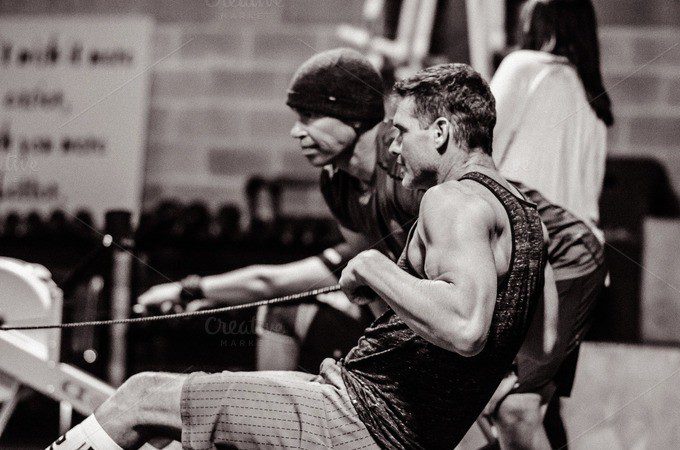You know rowing is one of the most beneficial exercises you can actually do and you might have even tried it a couple of times, but you’re not really sure if you’re doing it right. Perhaps you’re looking at buying one of the many best home rowing machines on the market, or maybe you’re afraid to use the machine and end up looking silly as you use an odd stroke.
Either way, you’re not alone: it’s easy to make mistakes your first few times on a rowing machine, especially if you’ve never actually been out rowing in a boat before. But it’s also easy to learn proper rowing technique and truly make the most of this incredible exercise.
These are the most common rowing mistakes beginners make:

#1 – Forgetting to check the damper
Newbies—even those who have been rowing in boats quite often before—often forget to check the damper (the lever on the side of the flywheel of most rowers), which controls the resistance level of the rowing machine. This is crucial because if a serious athlete has been using it right before a newbie you can end up on an incredibly strong resistance level that will exhaust your muscles well before you’ve completed your cardio workout.
How to fix it:
Remember that the higher the gear is, the more pressure the machine will put on your body. If you’re new to rowing you’ll want to stick with levels 3-5, as these are most like rowing through water. Put in enough hours to really master your form before you move beyond these levels.
#2 – Using only your arms to row
Yes, rowers have built upper bodies and yes, your upper body does play an important part in rowing, but you should be using your whole body to row. In fact, only 20% of the power used to row should be coming from your arms. 60% of your pushing power should actually come from your legs, while roughly 20% is from bracing your core, which helps transfer energy from your legs to your upper body for effective rowing. Using only arms to row is the primary way new rowers risk injury. You can seriously hurt your arms and shoulders, so stop doing this right away.
How to fix it:
Make sure that when you row you’re pushing with your legs and using your whole body to create a proper rowing motion. Most rowing machines have foot panels you can settle into and use to create the power you need.
#3 – Using all your muscles at the same time
While it’s important to use all your muscles, you don’t actually want to be pushing off with your legs and your arms at the same time. This puts unnecessary strain on your upper body and can also cause injuries, although typically not as severe as injuries caused by not using all of your muscles.
How to fix it:
A good rowing stroke is actually a three step process. You start by pushing with your legs, then pivot your shoulders backwards until they pass your pelvis (you want to be lying back slightly, but not a lot) and only then pull with your arms. You should always be pulling towards your chest, aiming for roughly the spot where you would bench press from (women can aim for where their bra ends).

#4 – Hunching your back
Hunching your back is pretty much never a good idea and this is particularly true when you’re rowing. It might not cause serious injury, but it means your muscles aren’t given the space they need and you’re not using the full potential of those muscles either. If you’re hunched over at your desk during the day you can bet you’re probably unconsciously hunching on the rower too.
How to fix it:
During rowing you want your spine to always be in neutral. Focus on using your core to keep yourself upright and make sure your shoulders are relaxed but not hunched. Working on your posture during your regular day will also help you stop slouching when you get to the rower.
#5 – Shooting your butt out so your upper body has to jerk back
If you’re rushing and especially if you have a lot of leg strength, it’s easy to push your butt out so fast that you have to jerk your upper body around in an attempt to line yourself up properly. This makes for a pretty unattractive stroke and can also cause injury if it’s extreme.
How to fix it:
The key to making sure that movements between your lower body and upper body are always connected is to really work on those core muscles. Make sure your core muscles are always engaged during your rowing movement and that you’re using them to transfer power from one set of muscles to the other. This sounds a lot more difficult than it is, trust me.
Wrapping It Up
If you’ve been making these mistakes, don’t worry: you’re not alone and you do have the power to fix them. Pay careful attention to your stroke and if your gym offers the option have a trainer sit with you during a session to help you perfect your form. Before you know it you’ll be in love with the rowing machine and all its benefits.

